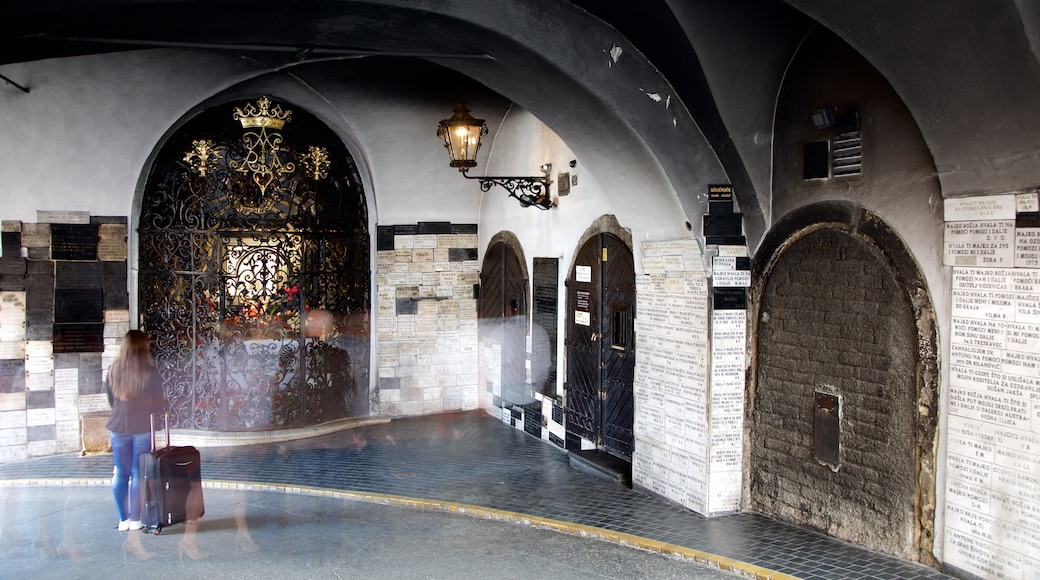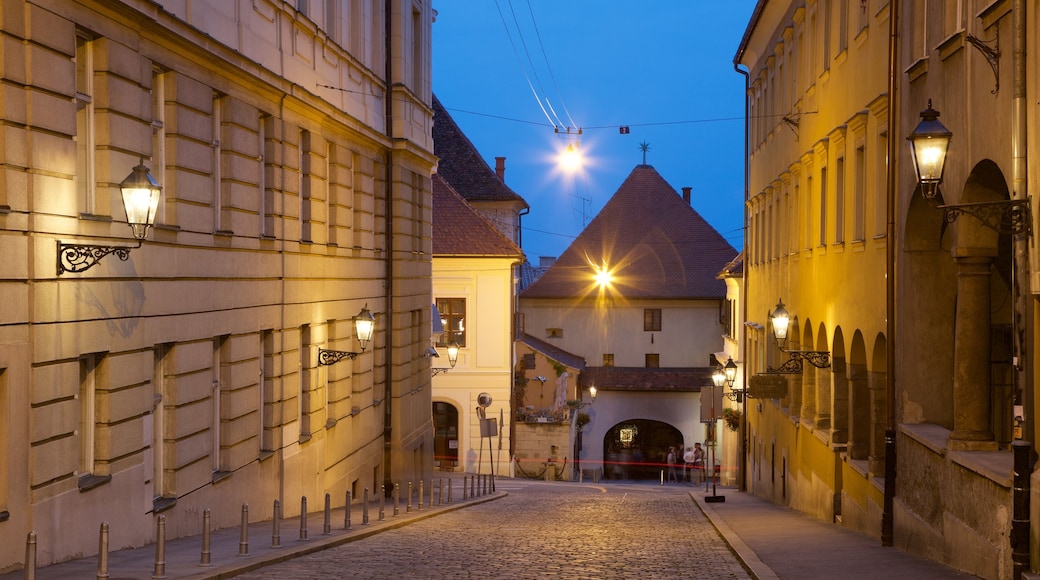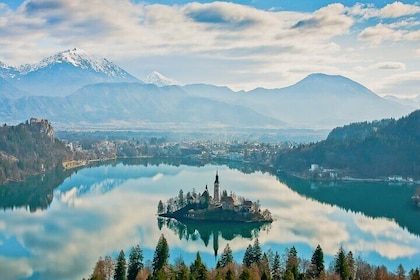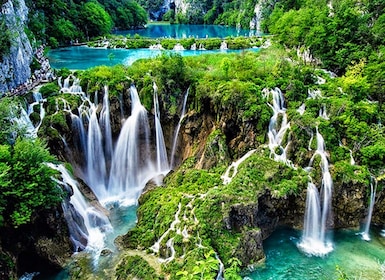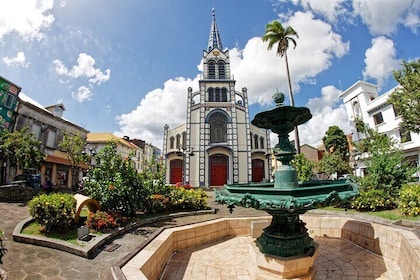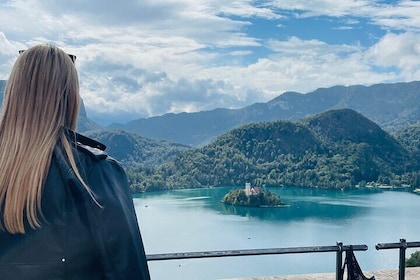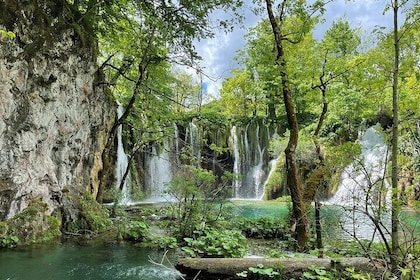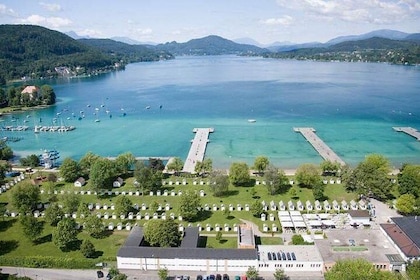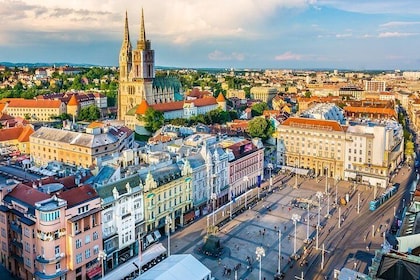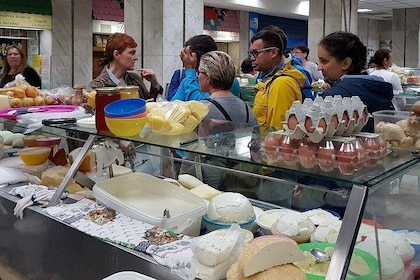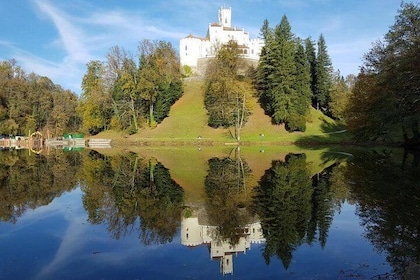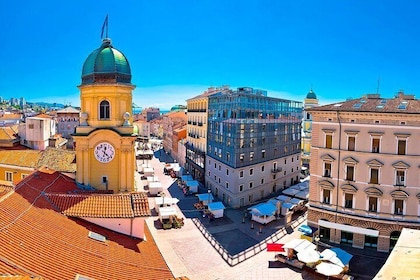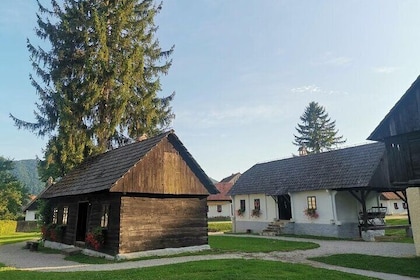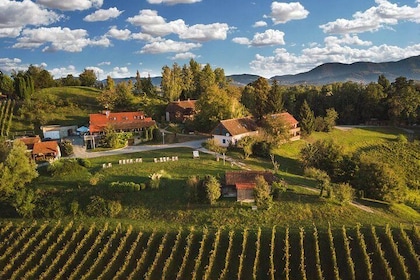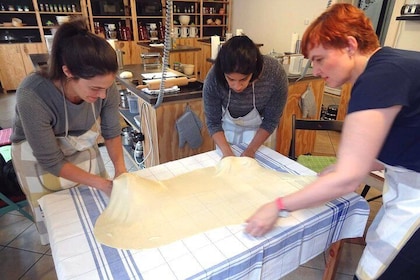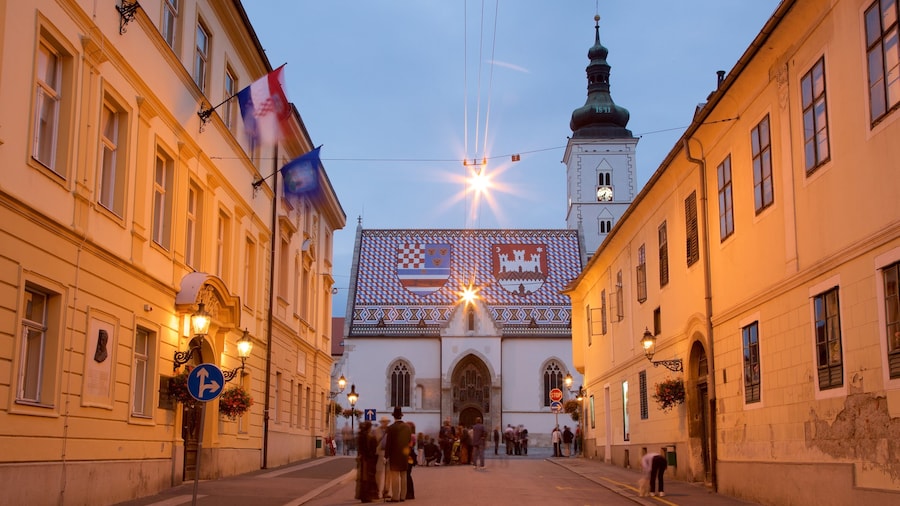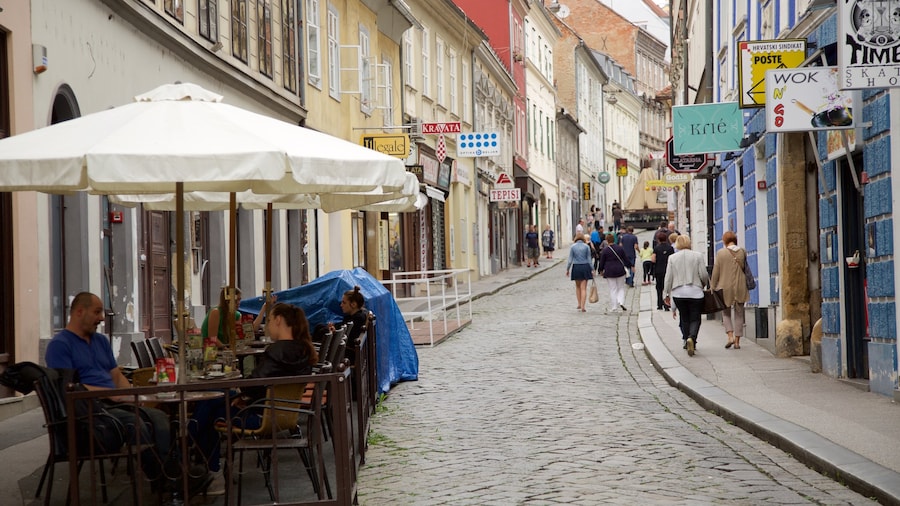The Stone Gate (Kamenita vrata) is one of the last surviving parts of Zagreb’s fortification walls. It’s also a gateway to the city’s medieval Old Town, called Gradec. Step through the gate to discover landmarks that will transport you back hundreds of years to the heart of Zagreb’s medieval life. Join the devotees who come to light candles and pay homage to a shrine dedicated to the Virgin Mary.
Although first documented in the 1400s, the gate is believed to have existed since the 1200s. Gradec received a royal charter in 1242, which declared it a free royal city, and its residents set about the construction of a defensive wall. The gate stood out for being a stone landmark in a city where wood was more commonly used. Originally it was a roofless tower. Today see the gate as a covered structure with an arched pathway. In the same street as the gate is the city’s oldest pharmacy, which has been open since 1355.
Inside the gate is a small chapel devoted to the Virgin Mary. It features a series of pews set on one side of the path. On the other side, and set behind a Baroque iron grid, is a painting of Mary cradling Jesus. The painting was the only thing to survive a fire that ravished the town in 1731. Mary thus became Zagreb’s patron saint. Watch as pilgrims congregate to light candles, say oaths and ask for blessings.
Wander the cobblestone streets and squares of Gradec. The medieval-style St. Mark’s Cathedral overlooks the regal St. Mark’s Square. Visit the Museum of Broken Relationships and Zagreb City Museum. The Croatian Museum of Naïve Art has a display of almost 2,000 works by Croatia’s untrained 20th-century masters.
The Stone Gate marks the eastern edge of Gradec. Walk here in less than 10 minutes from Ban Jelačić Square or ride a public bus, with several stops nearby. The gate, chapel and shrine are open 24 hours a day and admission is free.
